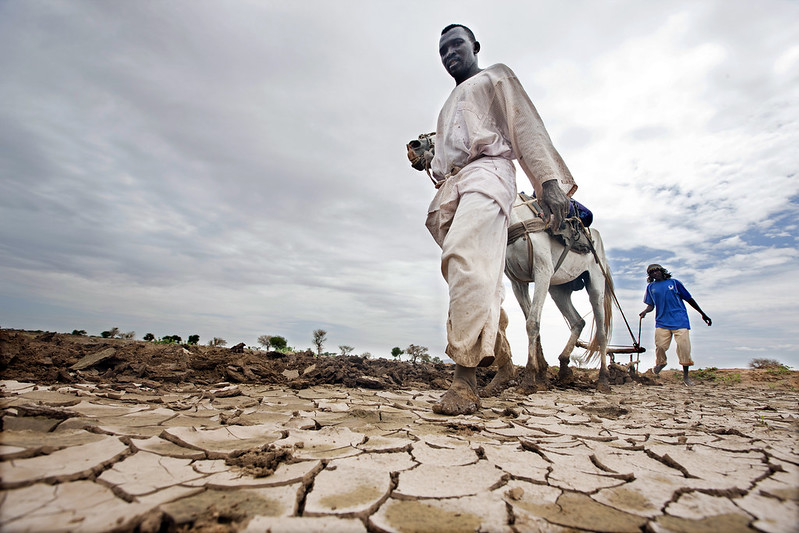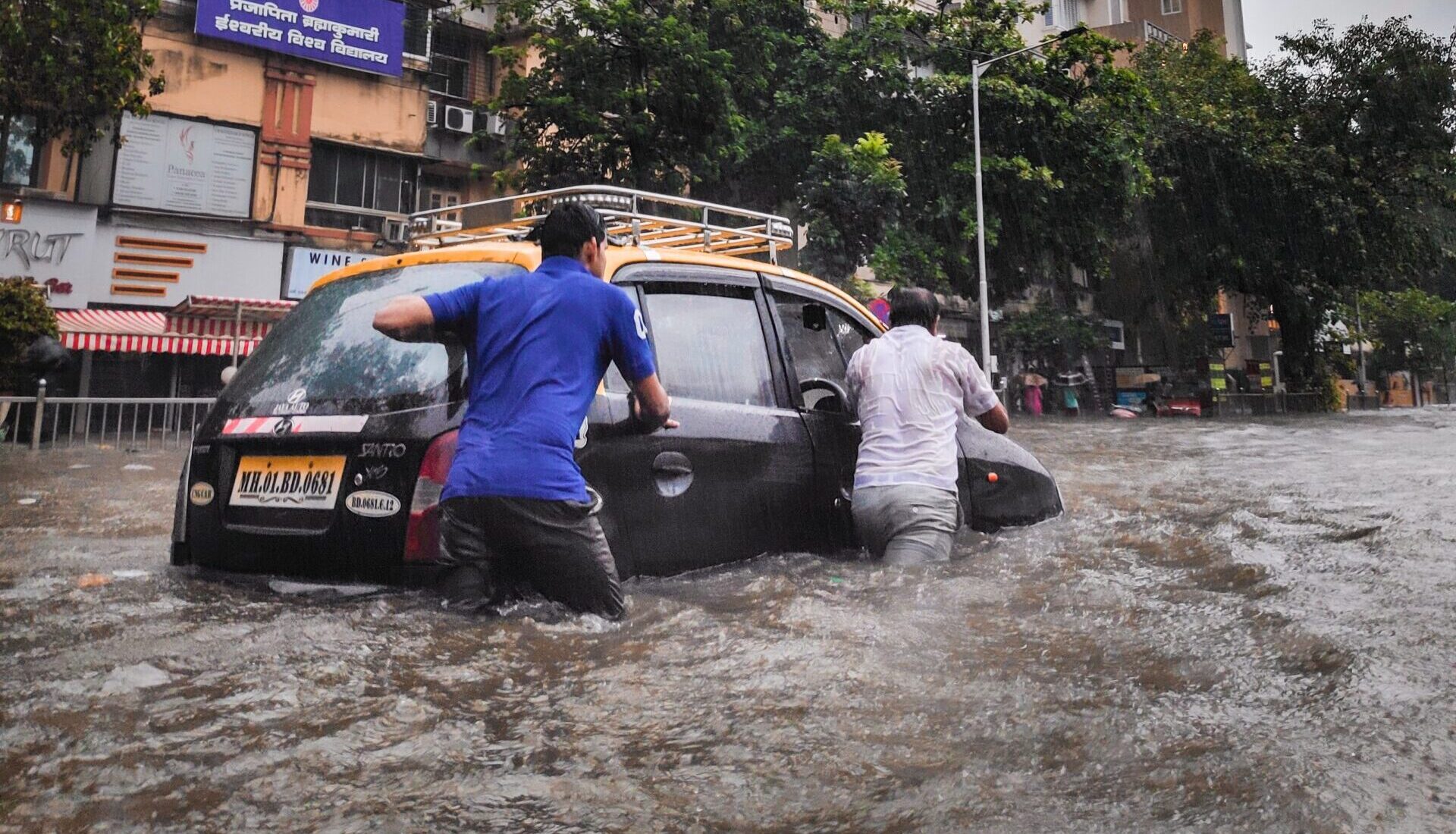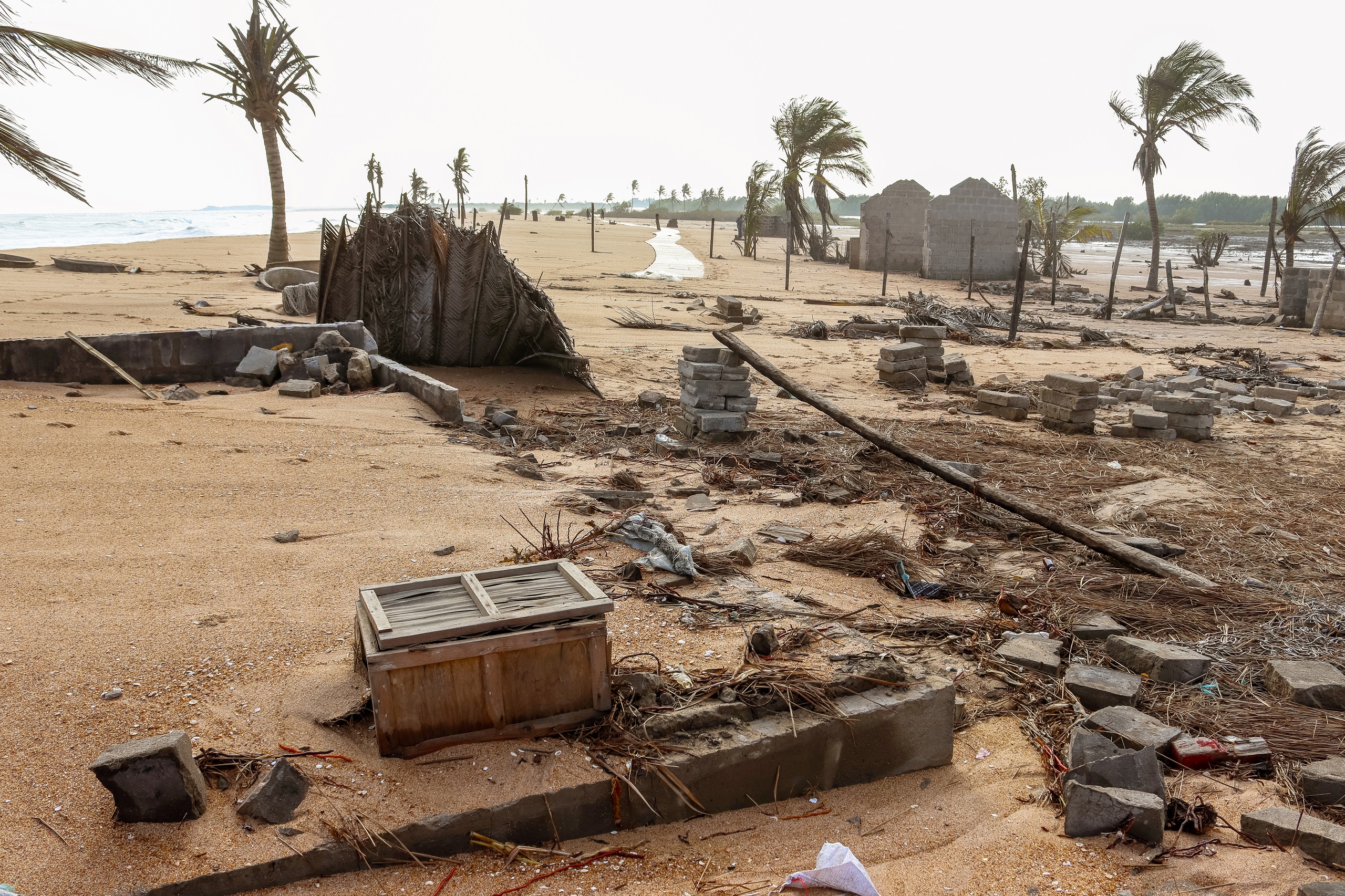How to quantify and measure Loss & Damage associated with displacement

Summary
This brief was written by members of the ”Advisory Group on Climate Change and Human Mobility” and the “Loss and Damage and Challenges of Human Mobility and Displacement Working Group”. It is the outcome of a discussion that covered policy-relevant topics on quantifying and measuring loss and damage associated with displacement with the objective of fostering thematic understanding and elaborate technical contributions to relevant discussions under the United Nations Framework Convention on Climate Change (UNFCCC) including but not limited to, the Loss and Damage Fund, Santiago Network for Loss and Damage and the Warsaw International Mechanism for Loss and Damage. The discussion was followed by a consultative process that built on the inputs of the panelists. Inputs come from group of experts from civil society organizations, research institutions and international organizations.
Structured around the five guiding questions used to frame the discussion, the responses shared by the speakers on the technical panel, and those later shared as textual contributions, have been collated as key messages in the following sections. This weADAPT article shares some key messages relating to each section below but please download the full document for further information.
- Methodological issues with the quantification of economic and non-economic loss and damage associated with displacement
- Initiatives to quantify and measure economic and non-economic losses and damages associated with displacement
- Key dimensions that need to be assessed when considered economic and non-economic loss and damage associated with displacement
- Knowledge gaps and possible ways forward
- Options to make relevant data collection and analysis efforts more comprehensive, systematic and comparable across countries.
This weADAPT article is an abridged version of the original text, which can be downloaded from the right-hand column. We highlight some of the brief’s key messages below, but please access the original text for more comprehensive detail, full references, or to quote text.
Methodological issues with the quantification of economic and non-economic loss and damage associated with displacement
- Attribution is a triple problem as far as loss and damage associated with displacement is concerned. Firstly, while attribution science is making advances, it is not always possible to attribute specific events to climate change. Secondly, the causal chains leading from such events to displacement are often complex, and always feature the interaction of diverse socio-economic and environmental factors which ultimately result in risk, and human mobility and immobility. Lastly, it is not always possible to determine to what extent losses of assets, welfare, or access to services that are experienced following climate impacts specifically result from displacement.
- Displacement-related data is often only available in crisis or emergency situations and it is usually intended to support short-term humanitarian response. Without baselines, it is difficult to assess what loss and damage is incurred by affected persons, and in particular what loss and damage is incurred due to displacement.
- Disaster displacement continues to be underreported and overlooked in humanitarian data collection. This is particularly the case in the context of slow-onset environmental processes, including those that are associated with climate change.
- Repeated sampling of individuals over time is challenging due to their mobility, in particular if impacted communities are mobile before a specific climate impact, such as in the case of pastoralists or seasonal migrants.
- Displacement is an all-encompassing experience that impacts a diversity of overlapping and intertwined economic and non-economic dimensions of people’s well-being. These dimensions are not easy to disentangle and not all these impacts can be easily measured in displacement situations.
- In particular, quantifying non-economic loss and damage (NELD) related to displacement requires addressing a key methodological issue: population movements imply the need for multi-sited assessments, targeting different groups of people forced to move, staying behind or in host locations. NELD, however, are very context-specific — because what people value is specific to societies, communities and even individuals and profoundly affected by their ties to their territory and community.
Initiatives to quantify and measure economic and non-economic losses and damages associated with displacement
There is a wealth of displacement data initiatives, primarily linked with operations for humanitarian response and durable solutions, as well as research. Fully leveraging this wealth of data will be important to inform the debates and decision-making on loss and damage.
The brief shares a list of those initiatives, providing information about their work and the data they provide (please read the brief for more details):
- Internal Displacement Monitoring Centre (IDMC), measuring the socio-economic impacts of internal displacement, as well as IDMC’s Global Estimates and IDMC’s assessment of potential, future displacement;
- IMPACT/REACH Multi-Sectoral Needs Assessments (MSNAs) and Area Based Assessments (ABAs);
- The International Organization for Migration’s (IOM) Displacement Tracking Matrix (DTM);
- IOM’s and Georgetown’s PROGRESS report;
- Displacement monitoring and forecast-based financing;
- Value-Based Assessments;
- Technical guide on averting, minimizing and addressing non-economic losses in the context of human mobility;
- Displacement-related metrics and indicators for Disaster Risk Reduction.
Other methodologies that promise to be particularly effective for the analysis of loss and damage
related to displacement include:
- Remote sensing;
- Longitudinal analysis.
Key dimensions that need to be assessed when considered economic and non-economic loss and damage associated with displacement
- Loss and damage assessments should be multifaceted and comprehensive, integrating both economic and non-economic dimensions. Economic and non-economic loss and damage are always interrelated: economic assets lost during displacement can also have non-economic values (e.g. one’s home, land, and livestock), which cannot be fully compensated by exclusively restoring the economic asset.
- Loss and damage adversely impact the enjoyment of a wide range of human rights including but not limited to the rights to life, food, water and sanitation, housing, and the right to a clean, healthy and sustainable environment, with disproportionate impacts on groups in vulnerable situations.
- Many forms of loss and damage also have cascading impacts and many of its dimensions are interrelated – addressing NELD can require addressing economic loss and damage first.
- Data needs to inform comprehensive responses across different dimensions —in a way that is aligned with the Durable Solutions criteria and objectives. The brief lists dimensions that have proven to be particularly important to understanding NELD in displacement settings (such as access to shelter, protection, access to healthcare etc.).
- Data on needs and risks also need to be adapted to the specific human mobility context.
- Moreover, relevant data efforts need to capture all implications of displacement including its impacts on IDPs and its effects on host communities, the people left behind and the broader systems and/or societies.
Knowledge gaps and possible ways forward
- The local baselines of people’s well-being and access to services are missing in many countries and in particular in fragile settings where census data is often insufficient to identify pre-impact and pre- displacement baselines. This makes it difficult to understand loss and damage and displacement. Strengthening national data systems is the foundation for more specific analyses.
- Slow onset processes are still underreported as a reason for displacement. Humanitarian surveys tend to only include immediate triggers such as conflict and sudden-onset hazards, whereas slow-onset processes tend to have economic consequences that are felt incrementally in a more diluted manner. Assessment tools should evolve to capture all reasons for displacement, including indirect reasons, or be complemented by other surveys in which the links between a movement’s trigger and its environmental context are explored.
- Understanding how individual and/or household-level mobility decisions are made in the face of climate factors is difficult. Understanding displacement and loss and damage experienced by communities that are already mobile (e.g.pastoralists and communities engaging in seasonal migration) is also challenging.
- Information on patterns of displacement —including on its duration and whether people are displaced multiple times— is largely missing.
- Information on displaced persons residing outside camps is particularly hard to gather in a systematic manner because of a lack of accurate population data and is generally a blind spot of humanitarian assessments. This requires improving estimates of the locations of displaced populations, investing more resources for sampling those populations and resorting to area- based assessments rather than data collection operations only focusing on sites directly managed by humanitarian actors.
- Information on the intangible dimensions of displacement that people are experiencing is largely missing from current assessments.
- Understanding what factors act as risk multipliers for and during displacement and creating a hierarchy of loss and damage could be useful.
Options to make relevant data collection and analysis efforts more comprehensive, systematic and comparable across countries.
- Even within the same region, there is a very limited number of indicators on loss and damage and displacement that can actually be compared. Some comparability across countries will be needed to prioritize, designed and delivered loss and damage assistance.
- Assessment of NELD should be better integrated in these data collection methods and coverage should be increased, as currently only specific aspects are considered for example, access to health. Complementing quantitative and qualitative data could help provide a more nuanced picture of displacement and related loss and damage.
- The most feasible path towards standardisation and collection of comparable data might be the alignment of data efforts by humanitarian partners such as IOM’s DTM and IMPACT/REACH’s MSNAs to develop products that are compatible and coherent with international standards and frameworks.
- Improving humanitarian data practices could, among others things, allow for:
- The production of better data on the stock of displaced persons, including disaggregation by different groups, and on their needs;
- The improvement of information on the length of displacement and multiple displacements; and;
- A more nuanced understanding of people’s reasons for displacement and the interactions among different displacement triggers.
- Defining a common conceptual framework that integrates all perspectives of loss and damage and displacement that need to be assessed would be key to this end. The elements of this framework would include:
- How people experience loss and damage from disasters and climate impacts before displacement and how this contributes to displacement;
- How people suffer loss and damage as a result of their displacement; and;
- How displacement acts as a driver of loss and damage increasing vulnerability to future climate impacts.
For each of these dimensions, relevant data actors would need to develop a list of economic and non-economic loss and damage that would need to be monitored and a set of indicators that should be tracked (or proxies that can be used in lieu of relevant data). This framework should be accompanied by a toolbox of assessment methodologies including “gold standard” methodologies for each indicator and alternative ones whenever the gold standard methodologies are not feasible.



(0) Comments
There is no content